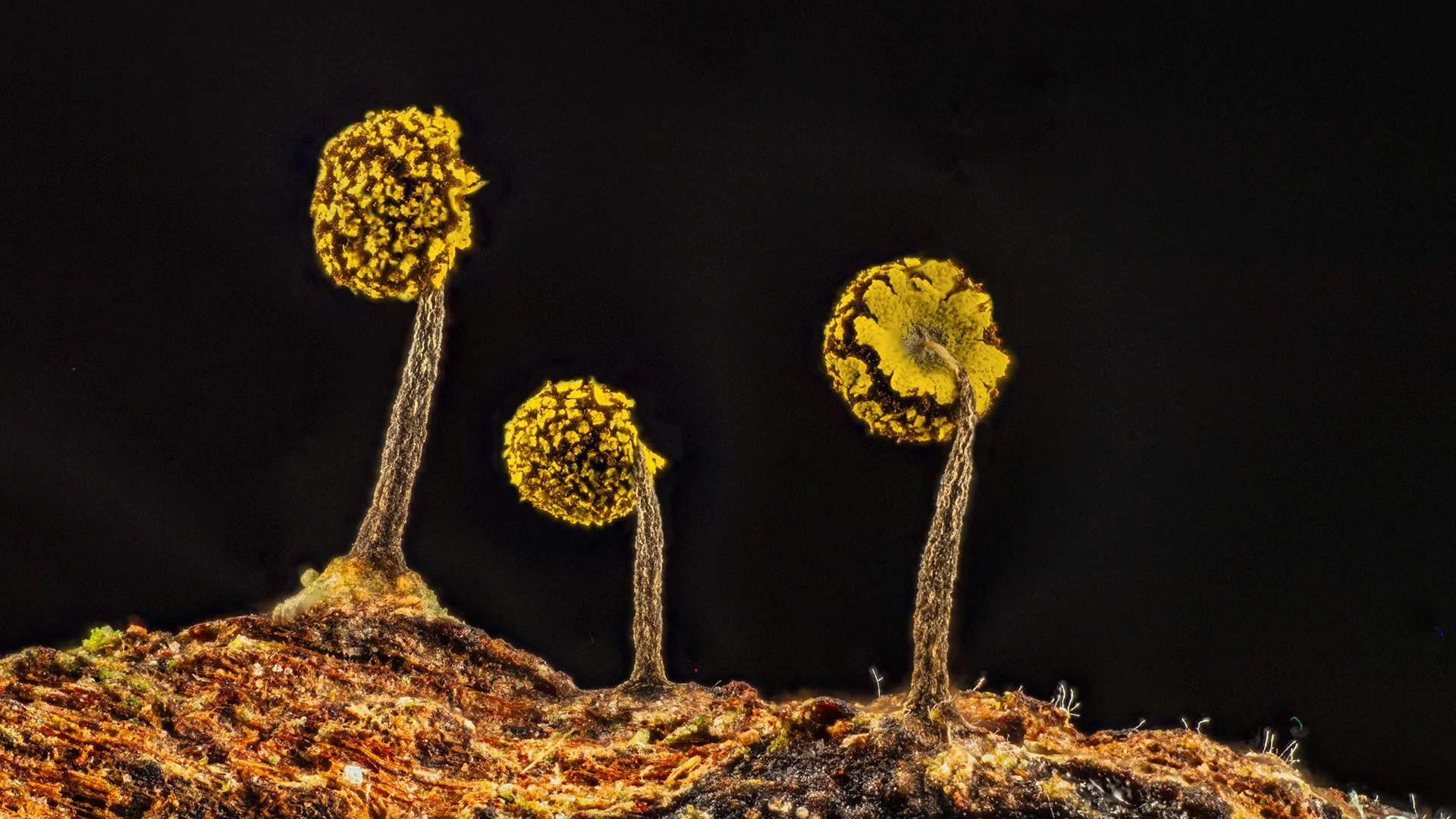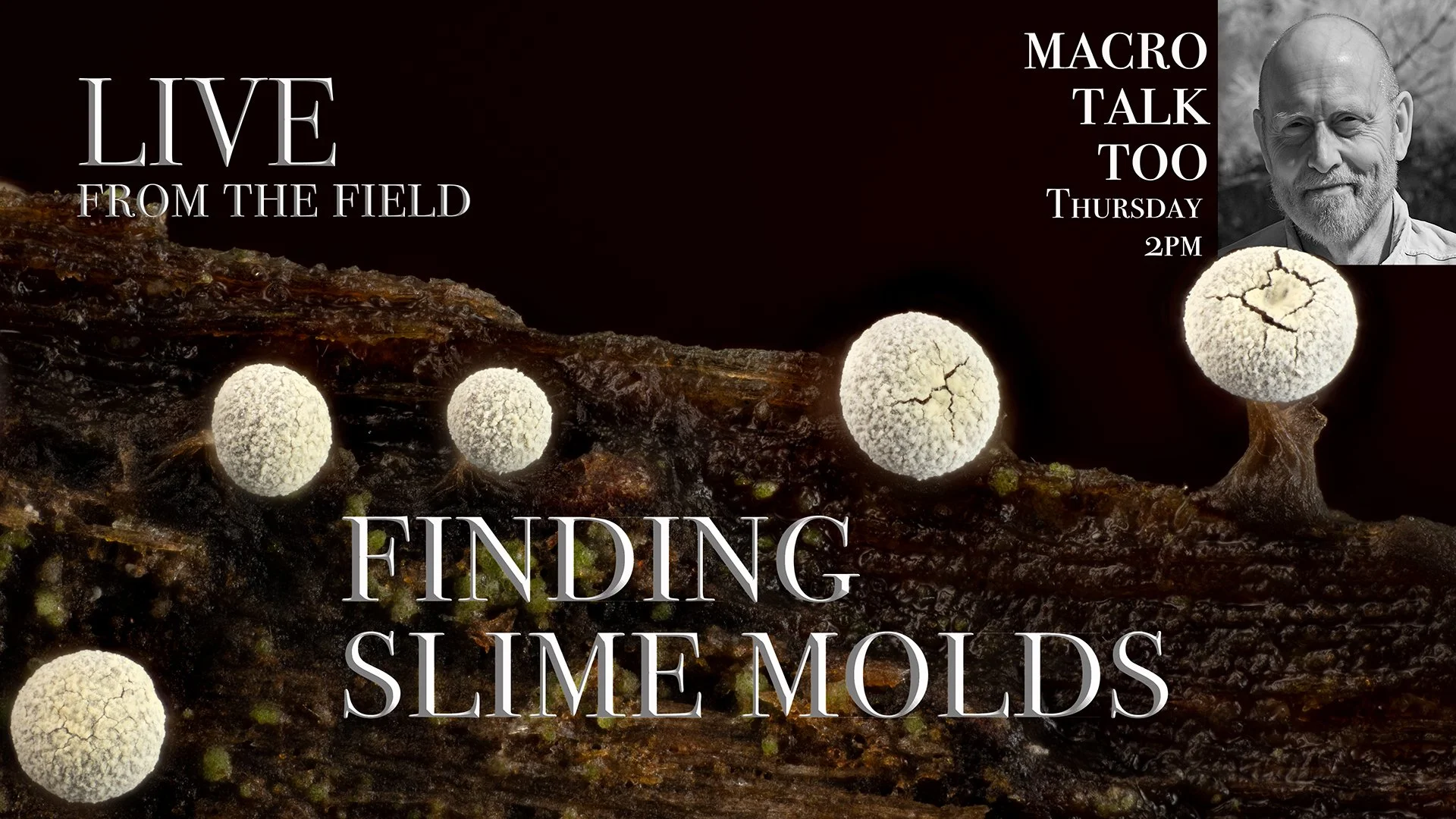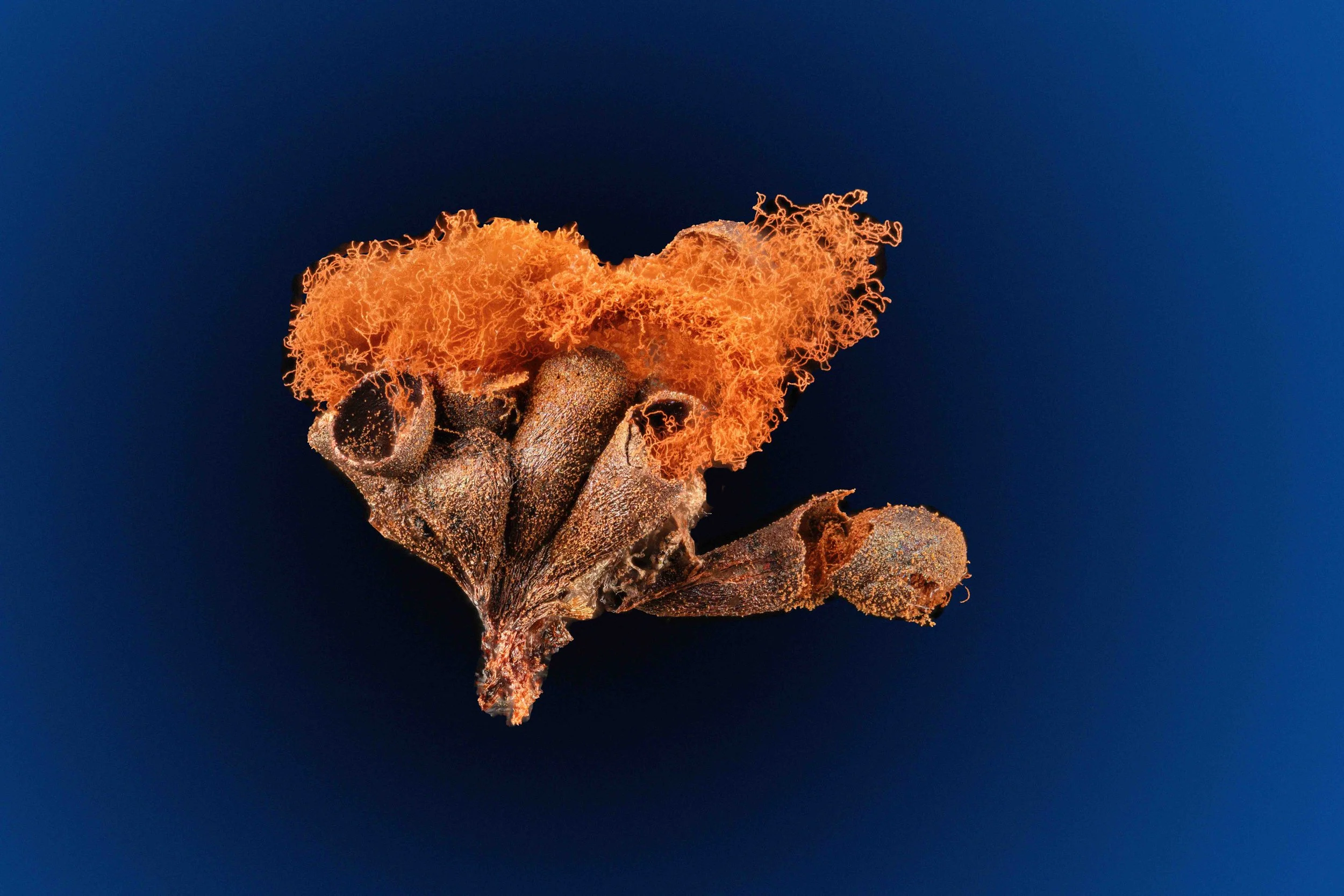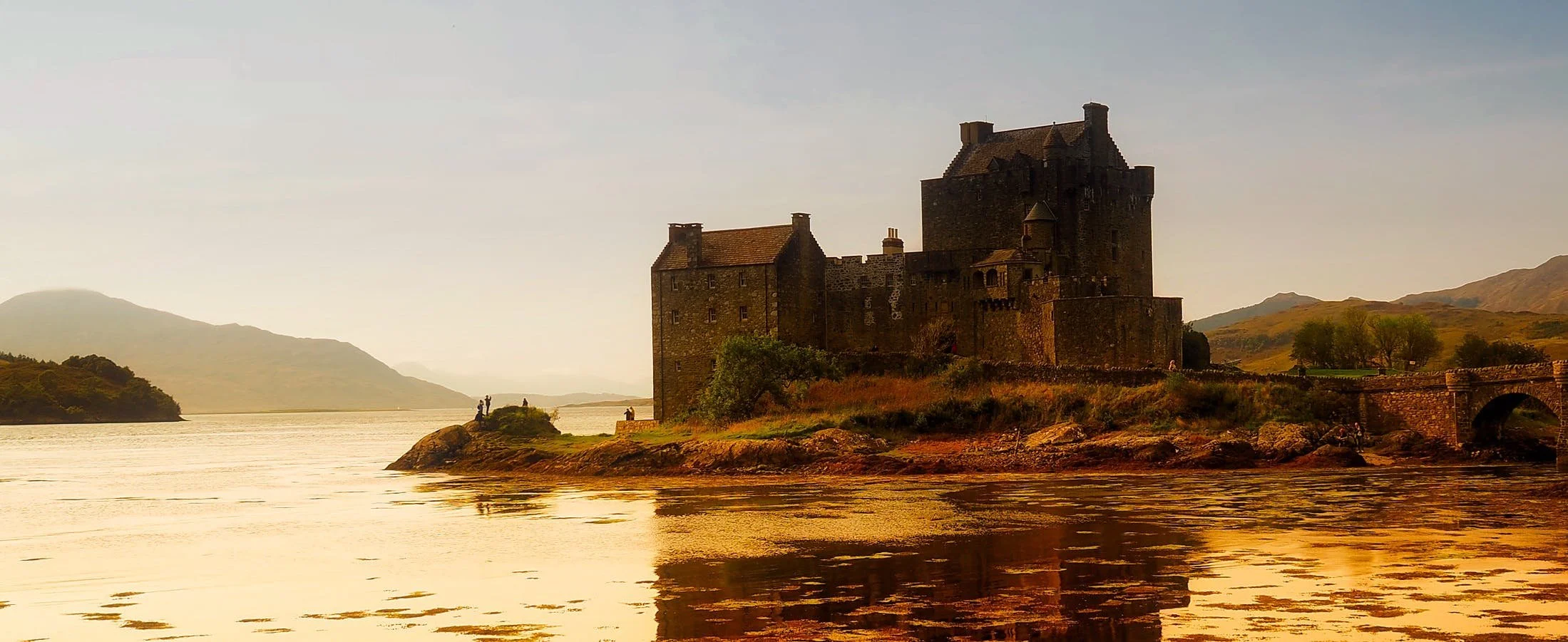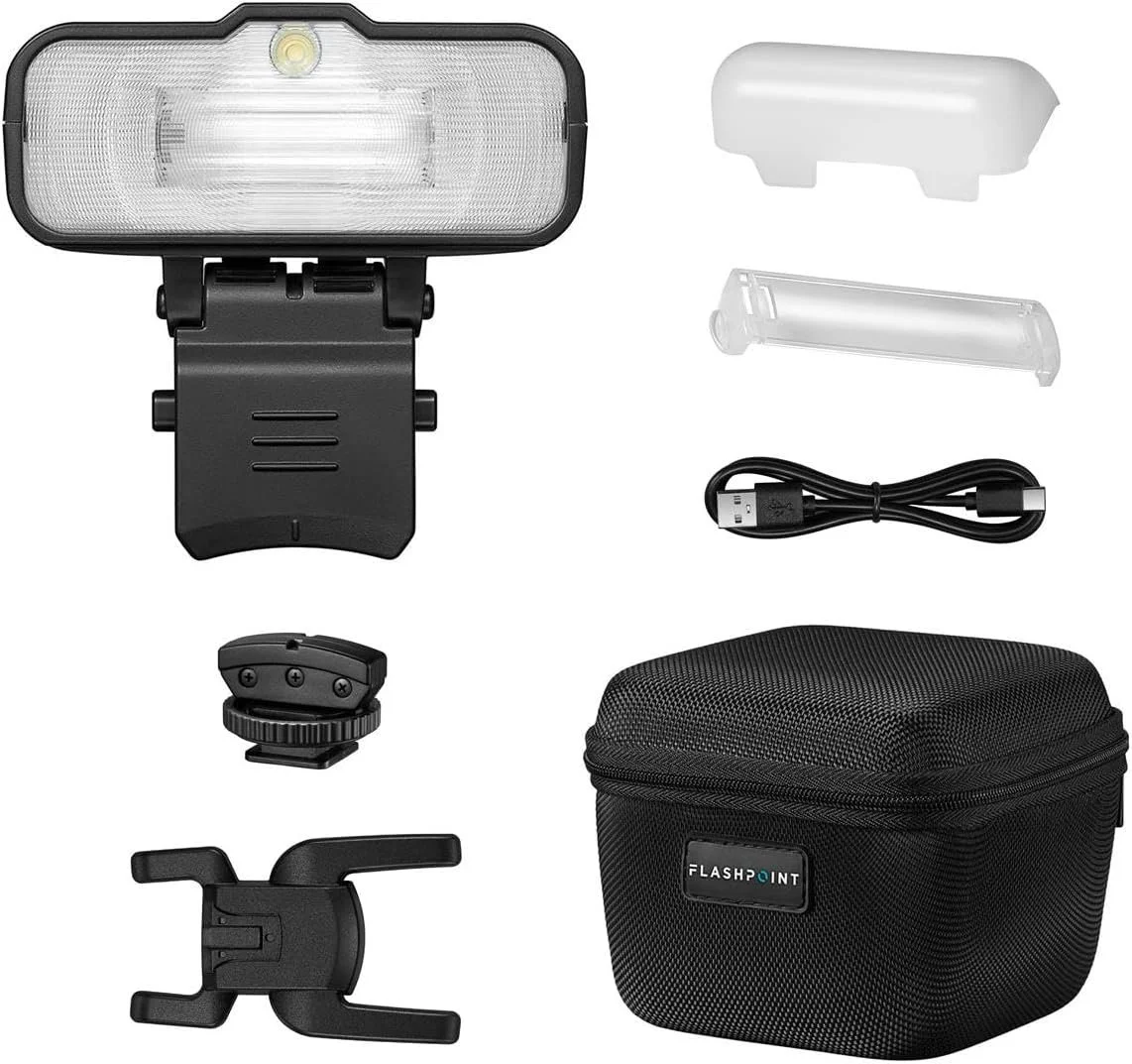Myxomycete Hunting
/Welcome to the fall of 2025!
Slime mold fruiting bodies
That sounded a little more ominous than my welcoming you to the transition from a scorching Summer to a crisp Autumn was intended to. Over the last few days, while worrying about the disturbing news coming from, it seems, everywhere, my anxiety was interrupted by two delightful surprises that reminded me that I have a job to do. The unexpected events were an introduction to a new photographer and the onset of several days of moderately heavy rainfall. The photographer is a chap named Kutub Uddin - from Bangladesh - and his work was brought to my attention by our own macro Master, Graham Carey. Kutub was previously unknown to me, but that is my fault, not his. If I had paid attention to the prestigious Natural History Museum (UK) Wildlife Photographer of the Year competition, I would have seen his work much sooner.
Home grown myxos
Kutub and I have not yet spoken but I have contacted him and expect to meet with him sometime in the next few days. I have reached out to him to see if he would be interested in coming onto the channel for a conversation about his rather lovely fungus and slime mold work. His images may well remind you of the award winning fungus photography of Australia’s Steve Axford, or the groundbreaking slime mold artistry of California’s Alison Pollack - but you be the judge. His work can be found on the Natural History Museum’s website (https://www.nhm.ac.uk/wpy/gallery/2025-slime-family-portrait?tags=ed.current) or on his own website (https://www.kutubuddin.photography/home).
It is the springtails that photobombed my picture that make it interesting
Apropos of nothing, but interesting nonetheless, Kutub lives just around the corner from my childhood home in the South of England. In fact, the woodlands that he frequents in search of the remarkable species that he showcases on his website are but a ten minute drive from my hometown, in the heart of the rolling chalk hills known as the South Downs. It really is a small world!
more myxos from my terrarium
What does rain have to do with any of this, you ask? Well, this corner of Middle Earth has been as dry as a bone all summer long, with very little precipitation since the merciful end of Winter (though there is another one planned for later this year - shudder!). I have been led to believe that this is precisely the circumstance under which dormant plasmodial slime molds will perk up and slither off in search of nutrition. It is also forecast that we will see a significant drop in temperature within a couple days of the rain ending and that this may be just the ticket for getting the piles of crawling dog’s vomit to rethink their plans and instead turn into fruiting bodies. Whether or not any of this is actually true is still open to debate, but the promise of a window of prime slime mold conditions is just too exciting to ignore.
We seem to have just two species around here…
Then it occurred to me that here was a rare opportunity to push the envelope and try something that no person in their right mind would even consider - A live-streamed slime mold hunt in the woods of Central Illinois. And this is exactly what I am going to try to do this Thursday during Macro Talk Too, at 2PM Central Time. We are going to take a walk in the woods and find some fruiting bodies to photograph. While we are turning over logs and digging through damp leaf litter, I will talk about how best to photograph these minute structures, in the field and in the studio. I will show you how I harvest and transport these delicate structures back to my studio. I will also demonstrate my own lighting preferences for use in high magnification field macro photography. What could possibly go wrong? Here is the link… https://youtube.com/live/q--joWJedk4?feature=share
So what about Macro Talk on Tuesday at 8PM? I thought that this would be a perfect opportunity to share with you my experiences using the Platypod camera platform, as well as the Laowa 90mm f/2.8 super macro lens, and a selection of exciting new macro field lights from Small Rig. This will be a multi-product pre-review that will set the stage for actually using this equipment during our field trip on Thursday. Time permitting I will also be doing a book review and introducing you to my 3D printed, high-magnification, LED-illuminated, quantum-inspired, anti-gravity capable slime mold locator and identification aid. If not, you will get to see it in action on Thursday. Here is your link to the Tuesday livestream - https://youtube.com/live/bPSY-vAayH4?feature=share
Saturday is Pzoom day for my Patreon Supporters and we are going to continue the theme of slime mold imaging by taking a close look at my setup for studio for photographing the specimens we brought back from the field on Thursday. Of core, we will stick to our usual programming during the first hour, so if you have images to share, or an introduction to make, or an update to report on, plan on doing so in the first hour. That is at 10AM on Saturday, 10.25.25 and your invitation is posted over on Patreon.
If you are not a member of my Patreon Supporters group, but would like to be a pert of keeping this channel alive and kicking, please visit my Patreon page at https://www.patreon.com/allanwallsphotography and see how much richer your life can become by giving me some money!
After Pzoom, at 12:30 on Saturday (still 10.25.25) we have another episode of Tangent! This is a forum for anyone interested in 3D design and modeling for macro photographers. We talk about all kinds of “maker-related” stuff, but the focus is usually going to be on improving our Fusion 360 CAD/CAM skills. It is hosted by Larry and myself and it is free for anyone who wishes to attend. This week we will handle any followup from last month’s discussion around parametric design workflow before diving into this week’s topic - more information coming soon. This your invitation to the party - Allan Walls is inviting you to a scheduled Zoom meeting.
Topic: Allan Walls’ Tangent, with Larry Strunk
Time: Oct 25, 2025 12:30 PM Central Time (US and Canada)
Join Zoom Meeting
https://us02web.zoom.us/j/6916802815?pwd=TS9tZi9ZL1NXeVUvOUF4eTg5YjdlZz09&omn=81806013439
Meeting ID: 691 680 2815
Passcode: 678122
Join instructions
https://us02web.zoom.us/meetings/81806013439/invitations?signature=byetKjaeG3CWlZdOhJ3F2PTVSLycl21LfRTwolpr2XU
Fruiting bodies disgorging their spores
That is all I have for today. Hope to see you sometime this week!
Allan


